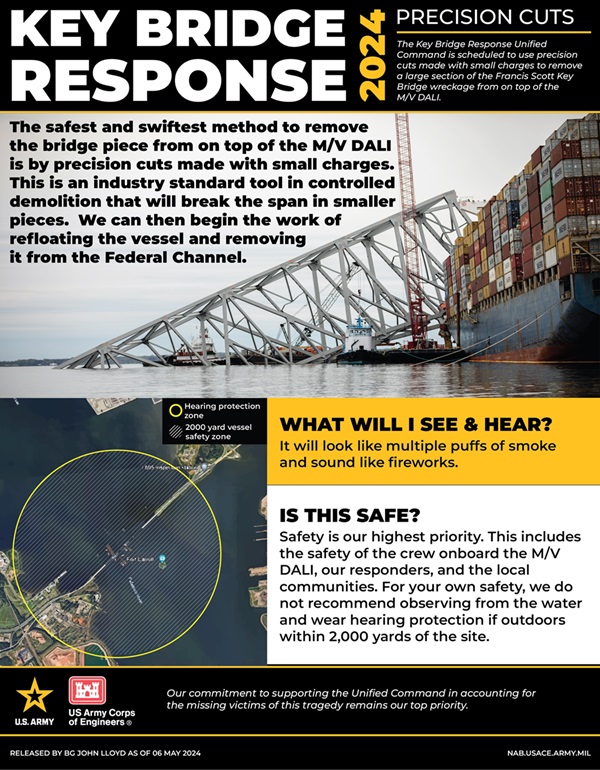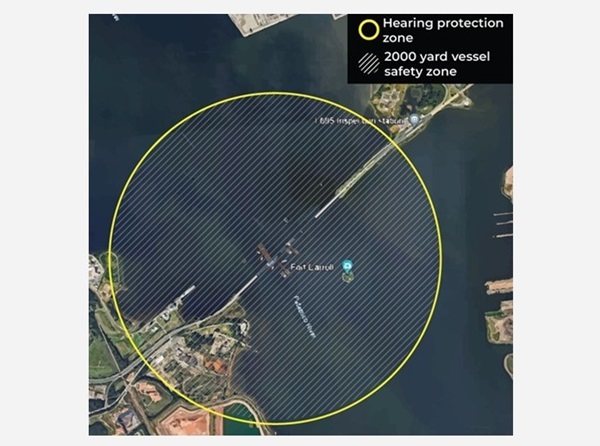BALTIMORE, MD—Key Bridge crews are preparing to begin the next phase of bridge removal, which will involve using explosives to “cut” sections of the Francis Scott Key Bridge wreckage.
The demolition team is using small charges to split the large section of truss at specific locations, which will create multiple, smaller sections. This will allow salvors to use cranes and barges already on-scene to remove the sections and ultimately remove the bridge.
The precision cuts will reduce risks for personnel and allow for faster and more efficient clearing of the channel for the Port of Baltimore.
“We remain focused on restoring the Marine Transportation System, while ensuring the protection of the public and the environment,” said Capt. David O’Connell, Key Bridge Response Federal On-Scene Coordinator. “By using precision cuts, we reduce risks to our personnel and can safely and efficiently continue clearing the channel for the Port of Baltimore.”
Hearing protection is not required outside of the 2,000-yard noise radius. Sound levels outside of the noise radius will be no louder than a standard fireworks show and will last for two to five seconds. The area covered by the safety zone is shown on the infographic below.
Officers from the Maryland State Police will be providing security in the area, and the public is highly discouraged from spectating.
Similar methods were previously used in March 2023 to demolish the Harry W. Nice Memorial Bridge in Charles County.
The current safety zone remains in effect and is intended to protect personnel, boats, and the marine environment. No vessel or person is permitted to enter the safety zone without first obtaining permission.

(Key Bridge Unified Command video by U.S. Army Corps of Engineers visual information specialist Christopher Rosario)
This article was written with the assistance of AI and reviewed by a human editor.
Do you value local journalism? Support NottinghamMD.com today.

